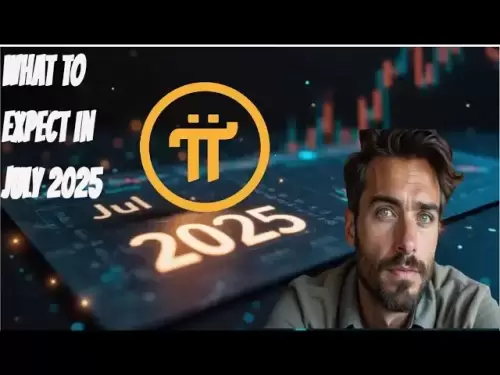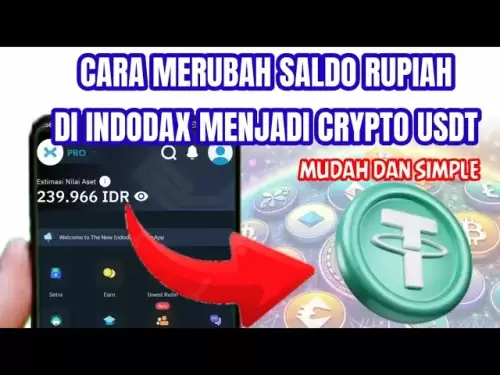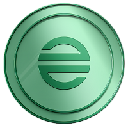-
 Bitcoin
Bitcoin $107,443.3008
-1.17% -
 Ethereum
Ethereum $2,494.2503
-0.63% -
 Tether USDt
Tether USDt $1.0003
0.00% -
 XRP
XRP $2.2496
2.23% -
 BNB
BNB $658.7569
0.63% -
 Solana
Solana $154.9826
1.94% -
 USDC
USDC $1.0000
0.01% -
 TRON
TRON $0.2799
1.07% -
 Dogecoin
Dogecoin $0.1659
-1.78% -
 Cardano
Cardano $0.5745
0.25% -
 Hyperliquid
Hyperliquid $39.7005
0.13% -
 Bitcoin Cash
Bitcoin Cash $519.5989
3.78% -
 Sui
Sui $2.7874
-2.40% -
 Chainlink
Chainlink $13.3762
-1.69% -
 UNUS SED LEO
UNUS SED LEO $9.0784
-0.64% -
 Avalanche
Avalanche $17.9846
-2.81% -
 Stellar
Stellar $0.2390
-0.06% -
 Toncoin
Toncoin $2.9028
0.25% -
 Shiba Inu
Shiba Inu $0.0...01147
-2.17% -
 Litecoin
Litecoin $86.6956
-1.27% -
 Hedera
Hedera $0.1508
-0.50% -
 Monero
Monero $322.6222
3.26% -
 Polkadot
Polkadot $3.4124
-2.99% -
 Dai
Dai $0.9999
0.00% -
 Bitget Token
Bitget Token $4.5434
-1.97% -
 Ethena USDe
Ethena USDe $1.0002
0.00% -
 Uniswap
Uniswap $7.1562
-2.61% -
 Aave
Aave $275.8830
-1.02% -
 Pepe
Pepe $0.0...09790
-4.04% -
 Pi
Pi $0.5018
-5.09%
How to trade NFTs on Kraken
To trade NFTs on Kraken, set up an account, deposit funds, and navigate the marketplace to buy or sell unique digital assets like art, music, and collectibles.
Apr 05, 2025 at 05:57 am
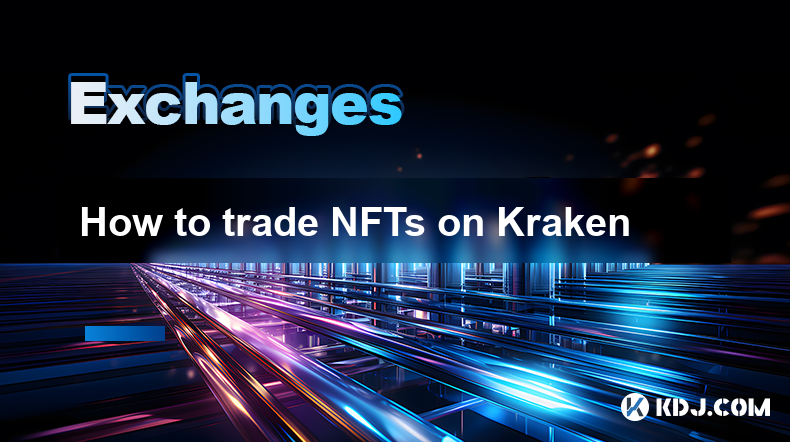
Trading NFTs (Non-Fungible Tokens) on Kraken, one of the leading cryptocurrency exchanges, has become increasingly popular as the digital asset market evolves. To successfully trade NFTs on Kraken, it's important to understand the platform's features, how to set up your account, and the steps involved in buying and selling these unique assets. This guide will walk you through the process, from setting up your Kraken account to executing your first NFT trade, ensuring you have the knowledge and tools to navigate this exciting space.
Setting Up Your Kraken Account
Before you can start trading NFTs on Kraken, you need to set up an account. The process is straightforward and can be completed in a few simple steps:
- Visit the Kraken website and click on the "Sign Up" button.
- Fill out the registration form with your email address, choose a strong password, and agree to the terms of service.
- Verify your email address by clicking on the confirmation link sent to your inbox.
- Complete the KYC (Know Your Customer) process by providing the required identification documents. This step is crucial for compliance with regulatory requirements and to enhance account security.
- Set up two-factor authentication (2FA) to add an extra layer of security to your account.
Once your account is set up and verified, you're ready to start exploring the world of NFTs on Kraken.
Understanding NFTs on Kraken
Kraken offers a variety of NFTs, which are unique digital assets stored on the blockchain. These can range from digital art, music, and collectibles to virtual real estate and in-game items. Understanding the different types of NFTs available on Kraken can help you make informed trading decisions.
- Digital Art: These are unique pieces of art created by artists and sold as NFTs. They can be anything from paintings and illustrations to digital sculptures.
- Music: Musicians can tokenize their music as NFTs, allowing fans to own unique pieces of their favorite songs or albums.
- Collectibles: These include digital versions of trading cards, memorabilia, and other collectibles that can be bought, sold, and traded.
- Virtual Real Estate: In some virtual worlds, you can buy and sell land or properties as NFTs.
- In-Game Items: Many video games now offer in-game items as NFTs, which can be traded outside of the game.
Depositing Funds into Your Kraken Account
To trade NFTs on Kraken, you'll need to deposit funds into your account. Kraken supports a variety of deposit methods, including bank transfers, credit/debit cards, and cryptocurrency deposits.
- Bank Transfer: You can link your bank account to Kraken and transfer funds directly. This method may take a few days to process but is often the most cost-effective.
- Credit/Debit Card: For a quicker deposit, you can use a credit or debit card. Keep in mind that this method may incur higher fees.
- Cryptocurrency Deposit: If you already own cryptocurrencies, you can transfer them to your Kraken wallet. This is typically the fastest method and can be done within minutes.
Once your funds are in your Kraken account, you can start trading NFTs.
Navigating the Kraken NFT Marketplace
Kraken's NFT marketplace is designed to be user-friendly, allowing you to browse, buy, and sell NFTs with ease. Here's how to navigate the marketplace:
- Browse NFTs: Use the search and filter options to find NFTs that interest you. You can filter by category, price, and other criteria to narrow down your search.
- View NFT Details: Click on an NFT to view its details, including the creator, description, and current price. You can also see the NFT's history and any associated media.
- Place a Bid or Buy Now: If you're interested in an NFT, you can place a bid or purchase it immediately if it's listed as "Buy Now." Be sure to review the terms and fees before making a purchase.
- Sell Your NFTs: If you own NFTs and want to sell them, you can list them on the Kraken marketplace. Set your desired price and any other conditions for the sale.
Buying NFTs on Kraken
Buying NFTs on Kraken is a straightforward process. Here's a step-by-step guide to help you through it:
- Select the NFT: Browse the marketplace and find an NFT you want to buy. Click on it to view its details.
- Review the Details: Make sure you understand the NFT's description, history, and any associated fees.
- Place a Bid or Buy Now: If the NFT is listed as "Buy Now," you can purchase it immediately. If it's an auction, you can place a bid. Enter the amount you're willing to pay and confirm your bid.
- Complete the Purchase: If your bid is accepted or you choose to buy now, follow the prompts to complete the purchase. The NFT will be transferred to your Kraken wallet once the transaction is confirmed on the blockchain.
Selling NFTs on Kraken
Selling NFTs on Kraken is just as easy as buying them. Here's how to list your NFTs for sale:
- Select the NFT: Go to your Kraken wallet and select the NFT you want to sell.
- List for Sale: Click on the "Sell" button and choose whether you want to set a fixed price or list it for auction.
- Set the Price: Enter the price you want to sell the NFT for. If you're listing it for auction, you can set a starting bid and a buy-now price.
- Confirm the Listing: Review the details and confirm the listing. Your NFT will now be visible on the Kraken marketplace for other users to see and purchase.
Managing Your NFT Portfolio
Once you've started trading NFTs on Kraken, it's important to manage your portfolio effectively. Here are some tips to help you:
- Track Your Investments: Keep an eye on the value of your NFTs and any changes in the market. Kraken provides tools to help you monitor your portfolio's performance.
- Diversify Your Holdings: Don't put all your funds into one type of NFT. Diversifying your portfolio can help mitigate risk and increase potential returns.
- Stay Informed: Keep up with the latest trends and news in the NFT market. This can help you make informed decisions about when to buy or sell.
- Secure Your Assets: Always use strong security measures to protect your Kraken account and your NFTs. Enable 2FA and use a hardware wallet for added security.
Understanding Fees and Taxes
When trading NFTs on Kraken, it's important to be aware of the fees and potential tax implications. Here's what you need to know:
- Trading Fees: Kraken charges a fee for buying and selling NFTs. These fees can vary depending on the type of transaction and the payment method used. Be sure to review the fee structure before making a trade.
- Gas Fees: When buying or selling NFTs on the blockchain, you may also need to pay gas fees. These are network fees that cover the cost of processing transactions on the blockchain.
- Taxes: Depending on your location, you may be subject to capital gains tax on any profits made from trading NFTs. It's important to keep detailed records of your transactions and consult with a tax professional to understand your obligations.
Tips for Successful NFT Trading on Kraken
To maximize your success when trading NFTs on Kraken, consider the following tips:
- Research Before You Buy: Always do your due diligence before purchasing an NFT. Research the creator, the project, and the market demand to ensure you're making a smart investment.
- Set Realistic Expectations: The NFT market can be volatile, so it's important to set realistic expectations and be prepared for fluctuations in value.
- Use Stop-Loss Orders: To protect your investments, consider using stop-loss orders to automatically sell your NFTs if they drop below a certain price.
- Stay Patient: Successful NFT trading often requires patience. Don't rush into buying or selling; take the time to make informed decisions.
Common Questions About Trading NFTs on Kraken
Q: What types of NFTs can I trade on Kraken?
A: Kraken offers a variety of NFTs, including digital art, music, collectibles, virtual real estate, and in-game items. You can browse the marketplace to see the full range of available NFTs.
Q: How do I deposit funds into my Kraken account to trade NFTs?
A: You can deposit funds into your Kraken account using bank transfers, credit/debit cards, or cryptocurrency deposits. Each method has its own processing time and fees, so choose the one that best suits your needs.
Q: What fees should I be aware of when trading NFTs on Kraken?
A: When trading NFTs on Kraken, you should be aware of trading fees, which vary depending on the transaction type and payment method, as well as gas fees for blockchain transactions. Additionally, you may be subject to capital gains tax on any profits made from trading NFTs.
Q: How can I secure my NFTs on Kraken?
A: To secure your NFTs on Kraken, enable two-factor authentication (2FA) on your account and consider using a hardware wallet for added security. Always use strong passwords and be cautious of phishing attempts.
Q: Can I sell my NFTs on Kraken?
A: Yes, you can sell your NFTs on Kraken. Simply go to your Kraken wallet, select the NFT you want to sell, and list it for sale at a fixed price or through an auction.
Q: How do I track the performance of my NFT portfolio on Kraken?
A: Kraken provides tools to help you monitor the performance of your NFT portfolio. You can view the current value of your NFTs, track changes in the market, and analyze your overall investment performance.
Q: What should I consider before buying an NFT on Kraken?
A: Before buying an NFT on Kraken, research the creator, the project, and the market demand. Understand the fees and potential tax implications, and set realistic expectations about the NFT's value and potential for growth.
Q: How can I stay informed about the latest trends in the NFT market?
A: To stay informed about the latest trends in the NFT market, follow reputable sources of news and analysis, join NFT communities and forums, and keep an eye on market trends and developments on platforms like Kraken.
Disclaimer:info@kdj.com
The information provided is not trading advice. kdj.com does not assume any responsibility for any investments made based on the information provided in this article. Cryptocurrencies are highly volatile and it is highly recommended that you invest with caution after thorough research!
If you believe that the content used on this website infringes your copyright, please contact us immediately (info@kdj.com) and we will delete it promptly.
- Solana, Pepe Coin, Crypto Meme Mania: What's Hot and What's Not?
- 2025-07-01 19:10:12
- Bitcoin Cash Price Pump: Unpacking the Reasons Behind the Surge
- 2025-07-01 18:30:12
- Dogecoin's Wild Ride: Rally Potential Amidst Investor Panic?
- 2025-07-01 19:10:12
- Algorand, Wormhole, and Interoperability: A New Dawn for DeFi
- 2025-07-01 19:15:12
- CATL's Indonesian Battery Blitz: A 6 Billion Dollar Bet on the Future
- 2025-07-01 19:20:14
- Bitcoin, PEP-20, and the Token Standard Revolution: Is Bitcoin Pepe the Next Big Thing?
- 2025-07-01 18:30:12
Related knowledge
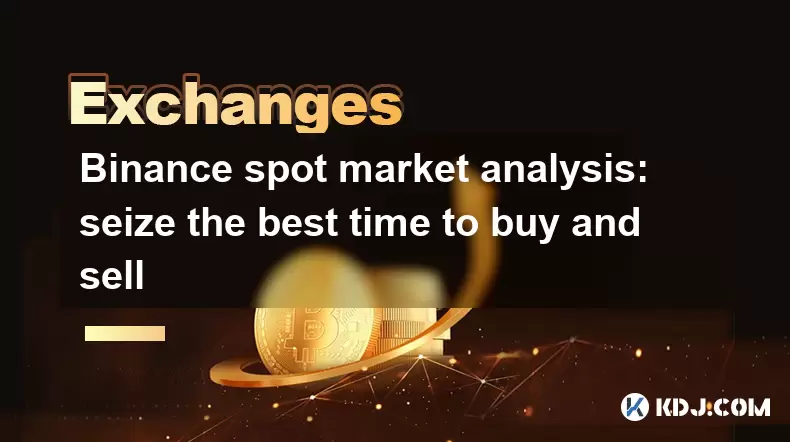
Binance spot market analysis: seize the best time to buy and sell
Jun 19,2025 at 04:56pm
Understanding the Binance Spot MarketThe Binance spot market is one of the most popular platforms for cryptocurrency trading globally. It allows users to trade digital assets at current market prices, making it essential for traders aiming to buy low and sell high. Unlike futures or margin trading, spot trading involves direct ownership of the asset aft...
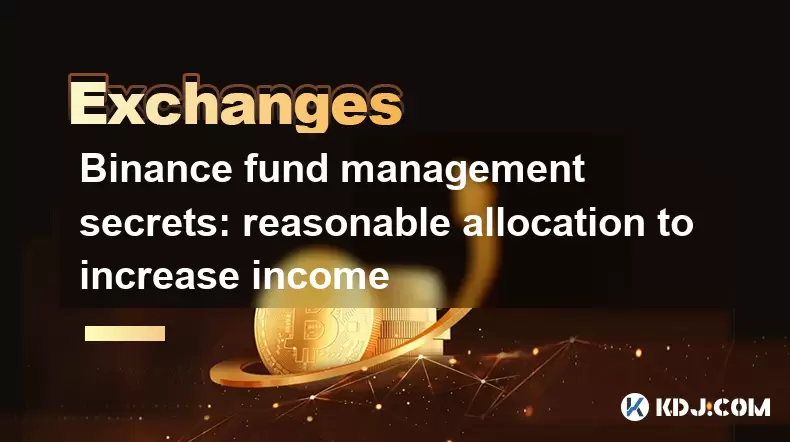
Binance fund management secrets: reasonable allocation to increase income
Jun 22,2025 at 02:29pm
Understanding Binance Fund ManagementBinance fund management involves strategic allocation of your cryptocurrency assets to optimize returns while managing risk. The key to successful fund management lies in understanding how different investment options on the Binance platform can be utilized to create a diversified portfolio. This includes spot tradin...
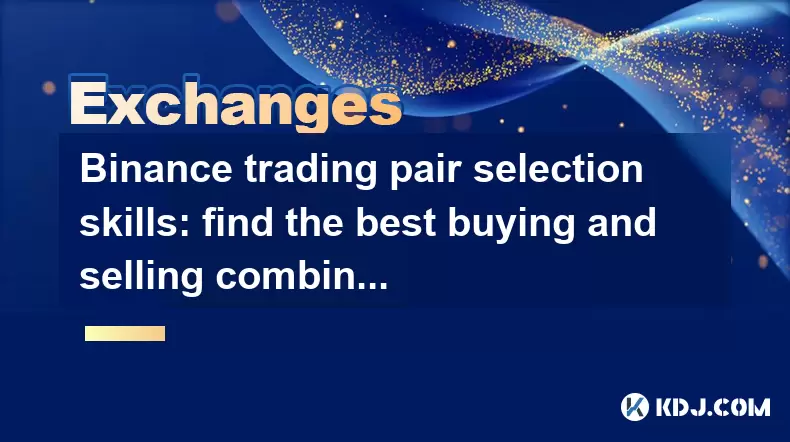
Binance trading pair selection skills: find the best buying and selling combination
Jun 23,2025 at 02:49am
Understanding the Basics of Trading Pairs on BinanceBefore diving into trading pair selection skills, it's essential to understand what a trading pair is. On Binance, a trading pair refers to two cryptocurrencies that can be traded against each other. For example, BTC/USDT means Bitcoin is being traded against Tether. Each trading pair has its own liqui...
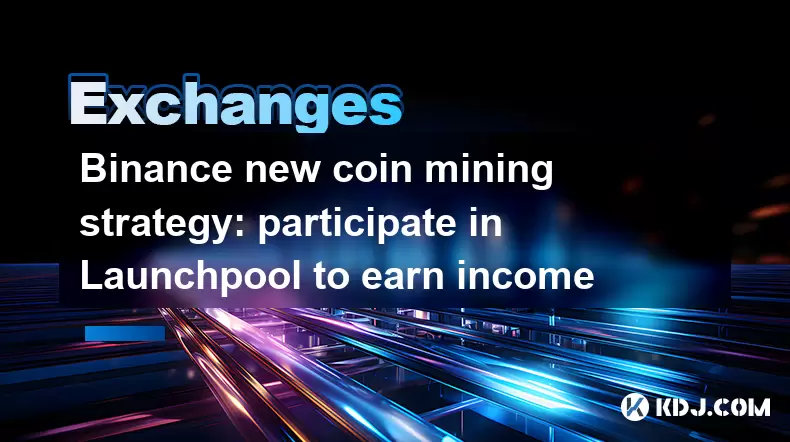
Binance new coin mining strategy: participate in Launchpool to earn income
Jun 23,2025 at 11:56am
What is Binance Launchpool and how does it work?Binance Launchpool is a feature introduced by the world’s largest cryptocurrency exchange, Binance, to allow users to earn new tokens through staking. This platform enables users to stake their existing cryptocurrencies (such as BNB, BUSD, or other supported assets) in exchange for newly launched tokens. T...
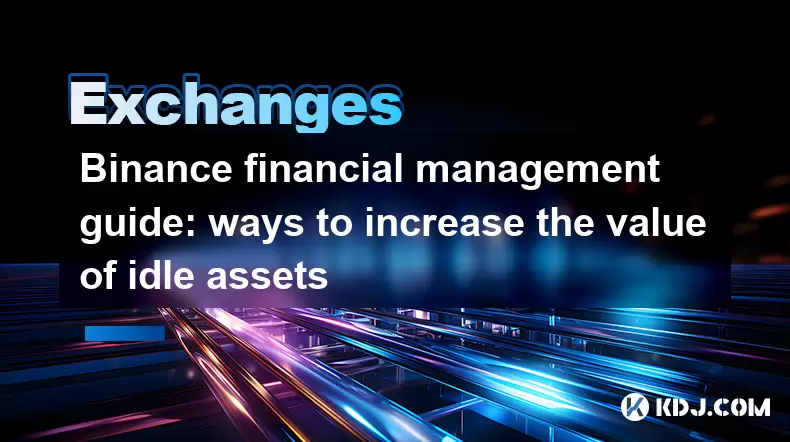
Binance financial management guide: ways to increase the value of idle assets
Jun 19,2025 at 11:22pm
Understanding Idle Assets in the Cryptocurrency SpaceIn the fast-paced world of cryptocurrency, idle assets refer to digital currencies that are not actively being used for trading, staking, or yield farming. Holding these funds in a wallet without utilizing them means missing out on potential growth opportunities. Binance, as one of the leading platfor...
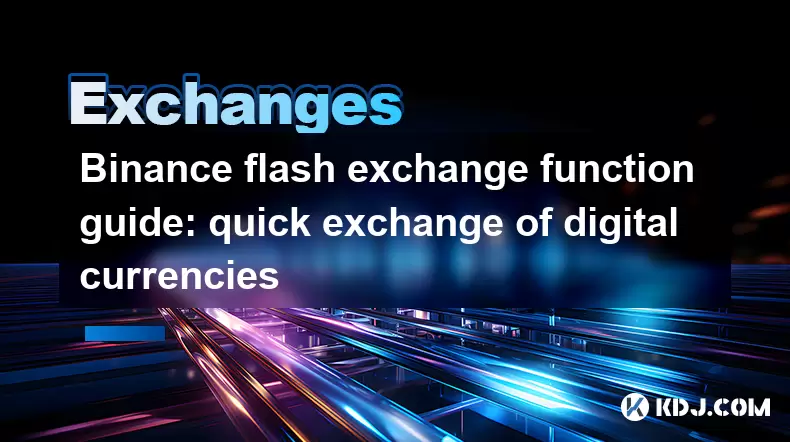
Binance flash exchange function guide: quick exchange of digital currencies
Jun 23,2025 at 12:29pm
What is the Binance Flash Exchange Function?The Binance Flash Exchange function is a powerful tool designed to allow users to instantly swap between supported cryptocurrencies without the need for placing traditional buy/sell orders. This feature simplifies the trading process by offering a direct exchange mechanism, eliminating the requirement to conve...

Binance spot market analysis: seize the best time to buy and sell
Jun 19,2025 at 04:56pm
Understanding the Binance Spot MarketThe Binance spot market is one of the most popular platforms for cryptocurrency trading globally. It allows users to trade digital assets at current market prices, making it essential for traders aiming to buy low and sell high. Unlike futures or margin trading, spot trading involves direct ownership of the asset aft...

Binance fund management secrets: reasonable allocation to increase income
Jun 22,2025 at 02:29pm
Understanding Binance Fund ManagementBinance fund management involves strategic allocation of your cryptocurrency assets to optimize returns while managing risk. The key to successful fund management lies in understanding how different investment options on the Binance platform can be utilized to create a diversified portfolio. This includes spot tradin...

Binance trading pair selection skills: find the best buying and selling combination
Jun 23,2025 at 02:49am
Understanding the Basics of Trading Pairs on BinanceBefore diving into trading pair selection skills, it's essential to understand what a trading pair is. On Binance, a trading pair refers to two cryptocurrencies that can be traded against each other. For example, BTC/USDT means Bitcoin is being traded against Tether. Each trading pair has its own liqui...

Binance new coin mining strategy: participate in Launchpool to earn income
Jun 23,2025 at 11:56am
What is Binance Launchpool and how does it work?Binance Launchpool is a feature introduced by the world’s largest cryptocurrency exchange, Binance, to allow users to earn new tokens through staking. This platform enables users to stake their existing cryptocurrencies (such as BNB, BUSD, or other supported assets) in exchange for newly launched tokens. T...

Binance financial management guide: ways to increase the value of idle assets
Jun 19,2025 at 11:22pm
Understanding Idle Assets in the Cryptocurrency SpaceIn the fast-paced world of cryptocurrency, idle assets refer to digital currencies that are not actively being used for trading, staking, or yield farming. Holding these funds in a wallet without utilizing them means missing out on potential growth opportunities. Binance, as one of the leading platfor...

Binance flash exchange function guide: quick exchange of digital currencies
Jun 23,2025 at 12:29pm
What is the Binance Flash Exchange Function?The Binance Flash Exchange function is a powerful tool designed to allow users to instantly swap between supported cryptocurrencies without the need for placing traditional buy/sell orders. This feature simplifies the trading process by offering a direct exchange mechanism, eliminating the requirement to conve...
See all articles





















